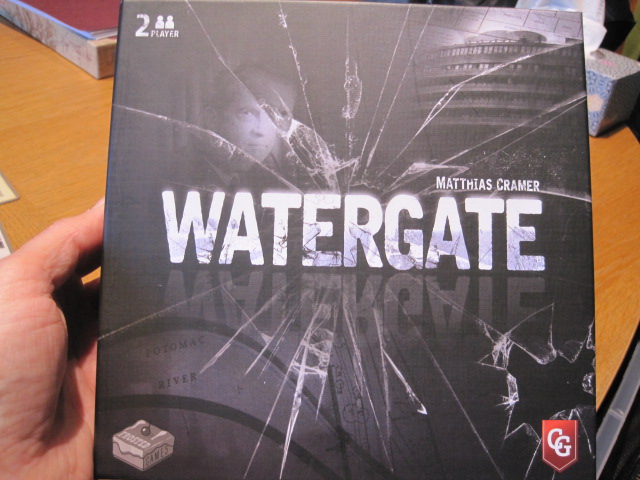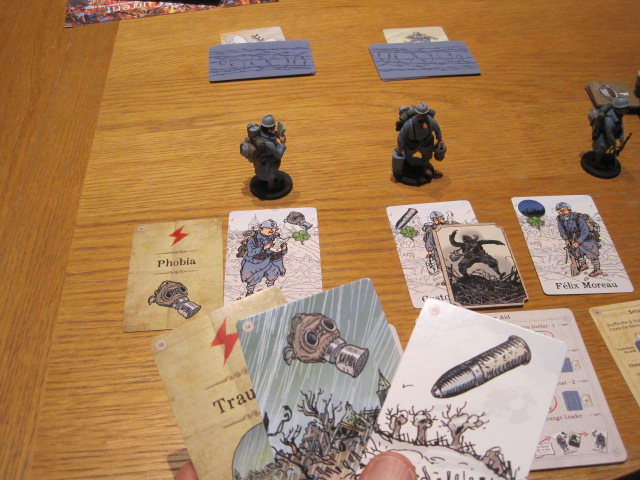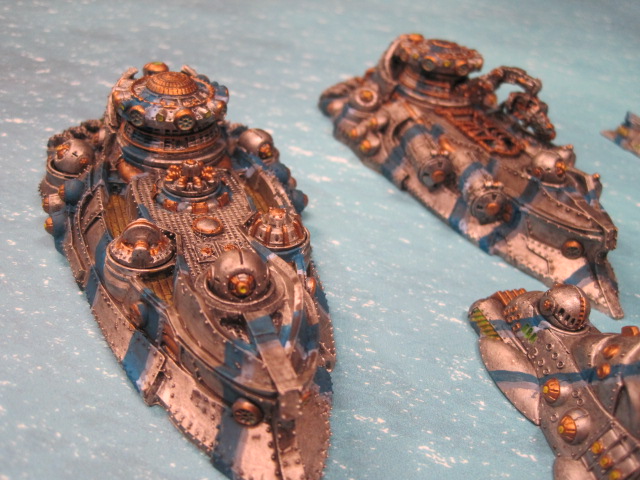I got the game Grizzled when it was originally printed. It's concept is that the players are friends from a small French village who join the military during the early days of World War 1. The object of the game is to survive the war together but this is not a wargame. Its about surviving the trials and trauma that conflict produces on people and it does it so well. It is for one to four players. I will be going over the Armistice edition of the game and the rules, which are applicable for both editions.
The object of the game is checked after a mission and if the peace card does not have any cards on it, and no players have cards in hand, the players survive the war and the game is over. At any time if the monument card is empty or the players have 13 cards or more in hand or one player has four or more points of hard knocks/trauma the game is lost.
The box is very engaging and done up like an old keepsake photo box on the sides and a bit on the front. The miniatures are a great edition, modeled after the illustrations of the possible characters you can play on the cards.
The age 14+ isn't necessarily because of the rules but because of the subject matter. Trauma and the setting should be treated with respect and caution.
The box is well organized, and the Armisitice edition has a series of scenarios that introduce new cards and rules as you play, and included the new cards seen in the Grizzled expansion. It also has new cards and rules that were not in either edition.
There is not a lot of room required for the game so a small table will do. The image below is the setup for a solo game, where you have three characters to handle. There are small square cards that have a synopsis of the rules for reference.
Speech tokens are received by the mission leader at the end of the mission, then the player on the left becomes the new mission leader.
When a player withdraws, they draw a random coffee token and places it on their character card. At the end of a mission, they are all revealed and it indicates whom the character supported during the lull between missions. The character with the most tokens gets to remove one or two hard knocks (depending on if the mission was a success or failure) and replenish their good luck charm. The top ones are used in the solo game and the bottom one in other games.
Here is the peace and monument cards, which will have cards above them at the start of the game. When a mission is over, if the mission was a failure, cards in no man's land are shuffled into the monument pile. Then the number of cards the players have in hand will be counted and that same number will be taken from the monument pile and added to the peace pile. Therefore as you lose missions, and keep cards in hand, the longer and more difficult the game will be as more hard knocks build up amongst the characters.
When playing a mission, a player's turn has four options:
1. You can either play a threat card (hard knocks/trauma on yourself or a trial card in the middle of the common play area known as no man's land);
2.Use your characters good luck charm to eliminate a particular trial in no man's land;
3.Withdraw from the front and draw a coffee token to place in frount of another character
4.If you have a speech token you can declare a trial type for your friends to discard from their hands.
In the picture below, I am holding a hand of three threat cards, the left hand one is a hard knocks/trauma card (providing a permanent rain trial for the group until the character retreats from the frount) and the two other ones are trial cards (gas/rain and shelling/snow).
Here is a situation in the later part of a turn, where Anselme and Gaston have left the field and only Felix on the right is left. It looks like I can play this card because in the common area there is only one other darkness and no shells. But Felix has a trauma card with darkness. If I play this I get it out of my hand but we will lose. If I leave the frount though, we win by surviving the turn. Eying the peace card pile, I also know that by leaving the frount we will win the game because...
This is an excellent cooperative game with a heavy theme. Hard choices are made each mission and many games end up with you questioning the might have beens and what ifs. The theme is also strong combined with the game mechanics.





















































